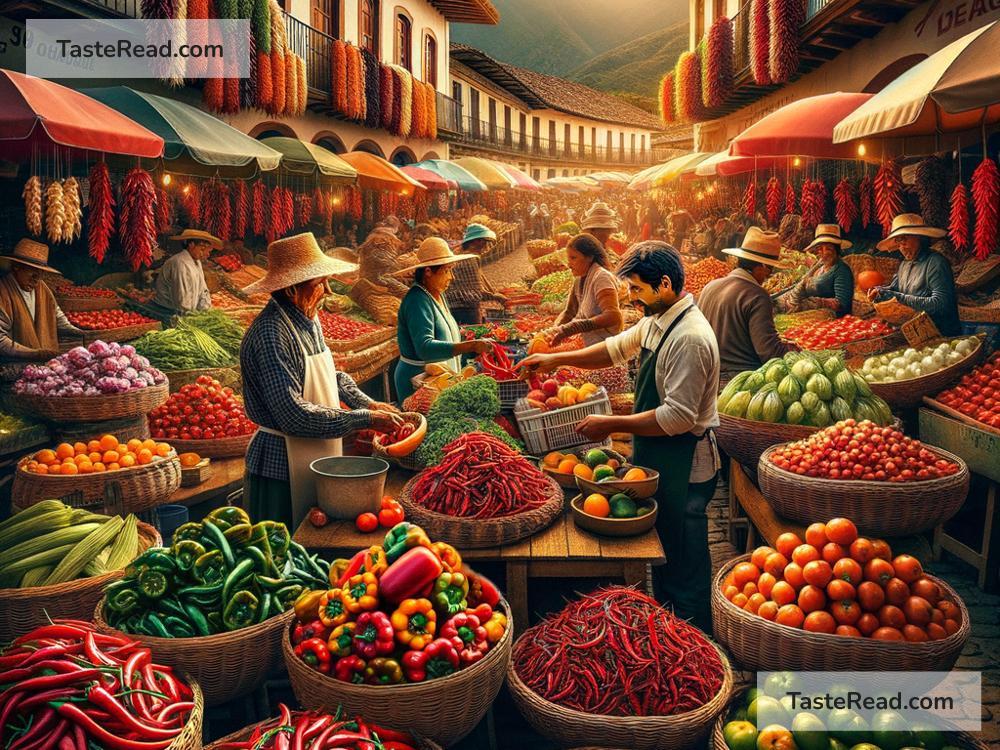The Curious Story of Chili Peppers in Central and South America
Chili peppers are one of the most iconic ingredients in Central and South American cuisine. They add fiery heat and bold flavor to dishes like tacos, enchiladas, mole, and ceviche. But chili peppers are much more than just a spice. They have a fascinating history that goes back thousands of years and are deeply tied to the culture, traditions, and food of the Americas. Let’s dive into the curious story of chili peppers and how they became a global sensation.
The Origins of Chili Peppers
The story of chili peppers begins in Central and South America, where they are native. Researchers believe that chili peppers were first cultivated over 6,000 years ago in what is now Mexico and northern South America. Wild chili plants grew in these regions, and early humans may have used their spicy fruits to add flavor to food or preserve it. Over time, people started selectively planting chili peppers to cultivate the tastiest and spiciest varieties.
Chili peppers belong to the Capsicum genus and are part of the nightshade family, which also includes tomatoes, potatoes, and eggplants. There are many species of chili peppers, but the most common ones today are Capsicum annuum (includes bell peppers and jalapeños), Capsicum chinense (habaneros and ghost peppers), and Capsicum frutescens (includes tabasco peppers).
Cultural Significance in Ancient Societies
Chili peppers were more than just food for ancient civilizations in Central and South America. They were woven into their cultures, rituals, and medicine. The Aztecs, Mayans, and Incas all valued chili peppers for their fiery taste, symbolic meaning, and healing properties.
In Aztec culture, chili peppers were considered sacred and often used in ceremonies. The Aztecs believed the heat of chili peppers symbolized strength, power, and vitality. They also incorporated chili into their diet alongside staples like maize (corn), beans, and squash. Together, these ingredients formed the foundation of their cuisine.
The Mayans included chili peppers in their art, pottery, and religious practices. They thought chilies had protective powers and provided blessings. Meanwhile, the Incas used chili peppers in traditional medicine to treat ailments like digestion issues and respiratory problems.
The Spread of Chili Peppers Around the World
How did chili peppers, which originated in the Americas, end up being used in cuisines across the globe? The answer lies in the Age of Exploration. When Christopher Columbus arrived in the Americas in the late 15th century, he encountered chili peppers for the first time. At first, Columbus thought they were related to black pepper, a spice highly valued in Europe. This confusion led to chili peppers being inaccurately named “peppers,” even though they are not botanically related to black pepper.
European explorers brought chili peppers back to Europe, and from there, they spread to Asia, Africa, and the Middle East through trade routes like the Silk Road. People in these regions quickly adopted chili peppers into their cooking, and they became a staple in dishes like Indian curries, Thai stir-fries, Korean kimchi, and Ethiopian stews. Chili peppers transformed global cuisine by adding heat, flavor, and vibrant color to countless recipes.
Interestingly, chili peppers became even more popular in Asia than they were in Europe. In countries like India, China, and Thailand, chilies are now an essential ingredient, adding spice to beloved dishes. Today, it’s hard to imagine Asian cuisine without them.
Health Benefits of Chili Peppers
Chili peppers are not just tasty—they’re good for you, too! They are rich in vitamins A and C, which help boost immunity and protect against disease. Chili peppers also contain an active compound called capsaicin, which gives them their spicy taste. Capsaicin has been linked to several health benefits, including pain relief, improved metabolism, and better heart health.
In traditional medicine, chili peppers have been used to treat conditions like arthritis, headaches, and colds. Even modern medicine uses capsaicin in creams and patches to provide relief for muscle pain and nerve discomfort.
Chili Peppers Today
Chili peppers continue to play a major role in Central and South American cuisine. From smoky chipotle peppers to bright orange aji amarillo, there are countless varieties of chilies to explore in the region’s cooking. Popular sauces like salsa, hot sauce, and mole rely on chili peppers to create bold, complex flavors.
In addition to being a key ingredient, chili peppers have become a cultural symbol. Festivals dedicated to chili peppers are celebrated in countries like Mexico and Peru, showcasing their importance in local traditions and culinary heritage.
Around the world, chili peppers have sparked a love for spice. They’ve found their way into everything from hot wings to chocolates to cocktails. And with their colorful history and unique ability to bring heat to the kitchen, the humble chili pepper has truly earned its spot as a global superstar.
Conclusion
The story of chili peppers is as vibrant and exciting as their flavor. From ancient civilizations in Central and South America to kitchens around the world, chili peppers have traveled far and wide, enriching cultures and cuisines along the way. Whether you love them mild or extra spicy, chili peppers are a reminder of how food connects us to history, tradition, and innovation. So next time you enjoy a fiery bite, think of the curious and adventurous journey of the chili pepper—it’s a tale worth savoring!


